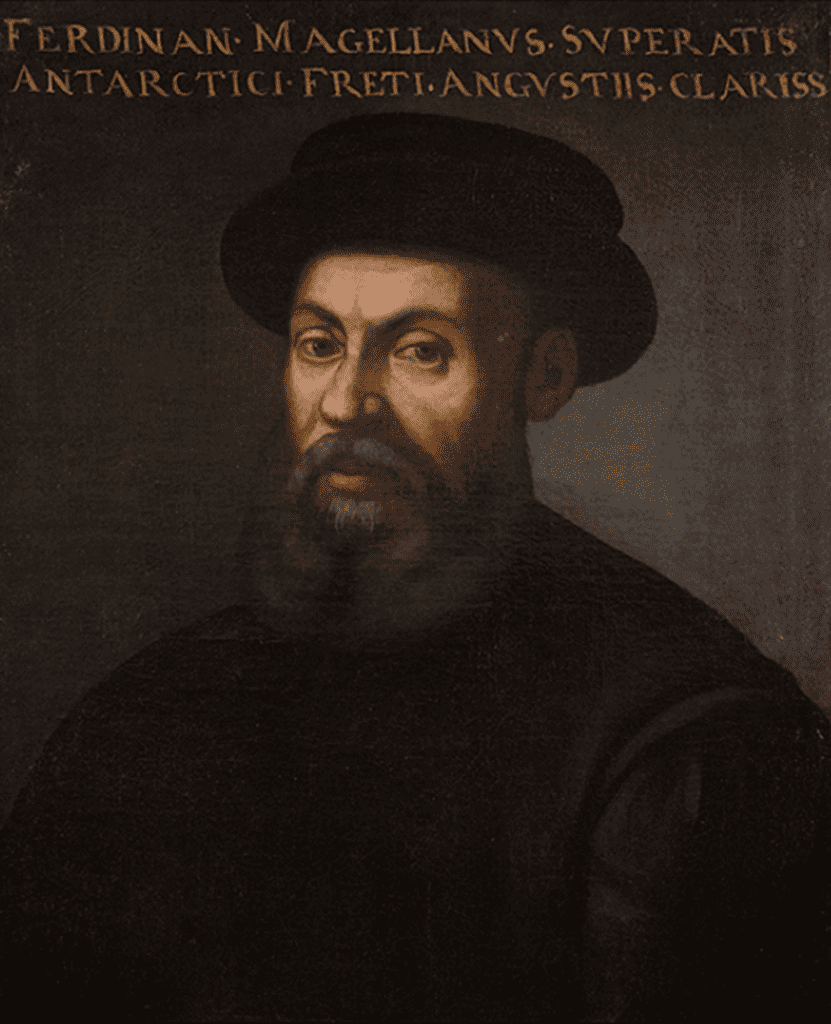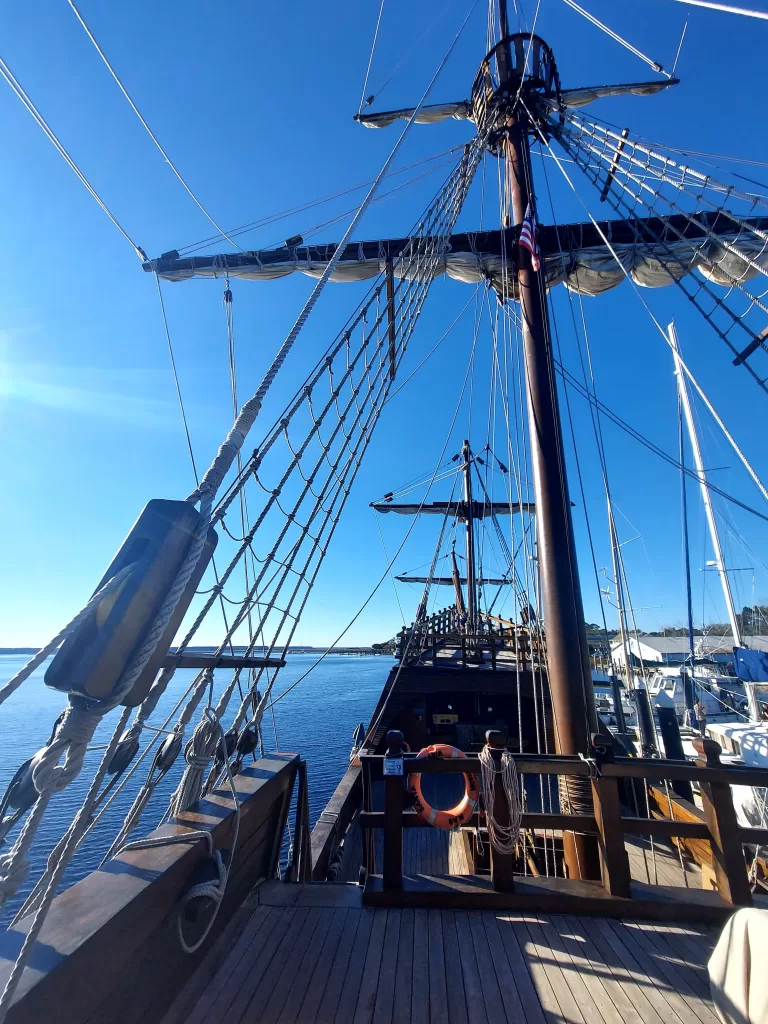The Nao Trinidad: Bringing Magellan’s Voyage to Life

Rumors have been circulating about the ship docked at the new marina in St. Marys, Georgia. Is it a pirate ship? Is it the Niña? In fact, it is the Nao Trinidad, a replica of Magellan’s ship which led the first circumnavigation of the globe. In this article, we will discuss the original sixteenth-century expedition and the stunning replica we may visit today.
The Mission
The Trinidad (Spanish for “Trinity”) was the flagship of Ferdinand Magellan’s voyage of circumnavigation from 1519 to 1522. King Charles I of Spain funded the expedition hoping Magellan, a Portuguese-born explorer, would discover a western route to the Moluccas to retrieve spices, which were precious for seasoning food, preserving dishes, and creating medicines and perfumes.

This venture began in Seville, Spain, on August 10, 1519, with the Nao (meaning “ship”) Trinidad leading a fleet of five ships. They sailed across the Atlantic and along the coast of South America, where they discovered the Strait of Magellan. This strait brought them to the Pacific Ocean (which Magellan named), allowing them to complete the first Pacific crossing in history. They stopped in the Philippines before reaching the Moluccas in eastern Indonesia after two years. Only the Trinidad and one other ship, the Victoria, accomplished this feat, as three others were lost en route.
In mid-December, the Trinidad and Victoria departed present-day Indonesia loaded with cloves, but almost immediately the Trinidad sprang a bad leak. Upon its repair, it attempted to return to New Spain (modern-day Mexico) by sailing eastward but was thwarted by strong headwinds, currents, and a violent storm which nearly caused it to wreck. After six months of the crew’s having suffered from cold, hunger, thirst, and scurvy, the ship returned to the Moluccas with only 17 of its original 54 men having survived.
The Portuguese, who controlled the eastern route to the Moluccas where they were lying in wait, captured the crew and removed the Trinidad’s sails and rigging. Afterwards, the ship was caught in a storm and smashed to pieces. Only four of the ship’s survivors returned to Europe. Magellan was one of the casualties, having died in battle in the Philippines.
Mission: Accomplished
The sole remaining ship, the Victoria, under command of Magellan’s successor Juan Sebastian Elcano, returned to Spain on September 6, 1522, after a journey of three years and fourteen days. It had sailed west across the Indian Ocean, around the Cape of Good Hope, then north along the West African coast before reaching Spain.

This expedition had faced numerous hardships: sabotage and mutinies by the crew (including by Elcano), starvation, scurvy, storms, and hostile encounters with indigenous peoples. Only 18 men of the original 270 and one ship of the original five completed the journey. This expedition is regarded as one of the greatest achievements in seamanship in history, although its route was much longer than expected and was not commercially useful.
Come Aboard!
Here in St. Marys, we are fortunate to have a replica of the flagship Nao Trinidad at our doorstep. This full-scale replica took 14 months to construct with the aid of 100 marine professionals and tradespeople, such as naval carpenters, net workers, rope workers, historians, and engineers, and was launched on March 11, 2018.
The vessel weighs 200 tons and measures over 93 feet long with five sails, five decks, and a steel mainmast more than 82 feet high. While the replica is constructed of Iroko (African hardwood) and pinewood over fiberglass, the original ship would have consisted largely of oak and pine. The replica possesses other modern upgrades such as engines, GPS, radar, fuel tanks, and water tanks.

The Trinidad belongs to the Nao Victoria Foundation, a non-profit entity which specializes in sharing maritime heritage and researching and promoting historical ships. The ship sails to ports from the Mediterranean Sea to the Unites States and Mexico, where its dozen or so employees and volunteers – who live aboard the ship – maintain it as a training vessel and floating museum.
It is fitting that St. Marys, a port town with deep historical connections to the water, should host this famed ship. I hope we all have a chance to show our appreciation for its choosing St. Marys as one of its ports of call! It will be docked at the new marina downtown until January 14 – don’t miss out!
Learn more about St. Marys’ maritime history (including smuggling!) on one of our St. Marys tours: Fugitives, Fighters, and Fudge or Murder, Mayhem, and Martinis!
Learn where the Nao Trinidad is going next on their Facebook page!


